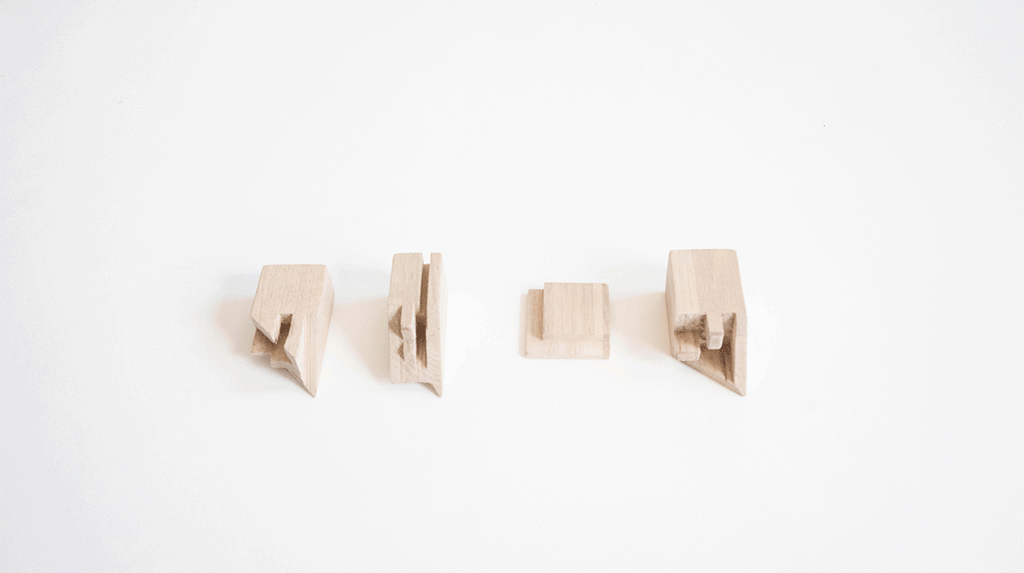
BRAND FEATURE: SUN AT SIX

There’s a couple that stick out. The first is that we’re inspired by how spaces determine and change your relationships with others. Specifically, how we can facilitate the kinds of relationships we want with our friends, family, and those around us.
The second is that we work with a form of traditional Chinese joinery - a fading art form - and work with artisans outside of Guangzhou to preserve this craft. My family has worked with some of them for over 20 years. Featuring this has been a core of what drives Sun at Six. A large issue in particular for me has been to address the Made in China stereotype - that goods made there are poor quality and cheap, when in reality China has a rich history of intricate craft. Chinese craft has traditionally been known for its intricacy and detail work - as contrasted with Japan’s renown in minimalism. Traditional joinery, for example, has been passed down generation to generation, with some joints that we use dating back to the Ming Dynasty era, with Chinese joinery originally inspiring the Japanese joinery so revered in the West today.
Honestly, it makes me sad that this framing of “traditional artisans” is necessary to elevate the work; I’d love to just say oh, we work with a couple cool dudes out in Guangzhou who do great work, but if you just say we make our work in China, the immediate assumption is cheap, poor quality, low wage labor, and the magazines turn their backs. On bad days it makes my blood boil - I have to clarify: no, no, we’re the cool kind of Chinese. How messed up is that? Now, in the wake of the Atlanta shooting, it’s the first time it feels like the wider culture is open to reflecting on this.

You founded Sun at Six with your family. How has that shaped how you approach your business?
My mom is a furniture designer, so she’s taught me a lot over the years. There’s a lot of insight I’ve gotten growing up around her - not just on aesthetic, functional sides of design, but on production processes as well - how to design to maximize wood yield, how to think about environmentally friendly processes, co-designing pieces so that the waste from one piece can be used in another.
I remember looking over her shoulder as a kid and messing around, trying to emulate her by trying to draw a table. I think one of the pieces I drew when I was in middle school she actually made and sold at one point. It’s funny because I also remember simultaneously finding furniture super boring back then - I think I did it in the way that kids try to act grown up and do grown up things.

Tell us about the traditional joinery technique you utilize in your designs.
It’s a huge part of our work - often, the design process is collaborative with the joinery masters we work with. We propose different designs and work with them to determine what joints make sense where, how we can fit different joints in different pieces. Our goal is to create work that resonates in contemporary culture, but use traditional technique and craft. For some, maintaining the pure traditional craft without change is of the utmost importance; I respect that. My goal is to continue to move design forward while integrating traditional techniques, maintaining their relevance and importance. People won’t want Ming Dynasty chairs forever; I’m happy to integrate Ming dynasty joints into 2021 chairs and make sure the artform continues. Sure, not everyone is a joinery expert and will appreciate it, but anyone looking at the work can see that there’s a certain level of craftsmanship that makes it special, even if they can’t identify exactly what it is. You don’t have to be a Michelin food critic to appreciate that good good flavor.

What are your favorite ways to make your space cozier?
I think lighting is underrated, underexplored - the general spectrum of possibilities ranges from brightness to how yellow you want the bulb. It’s super limited. There are so many more possibilities than that. Even working with the bare minimum, like shape and color, can make for an interesting immersive mood changer. Frankly, there are a lot of boundaries left to be pushed here.
My personal favorite is lowering furniture height - the Low Life my friend calls it. By lowering your furniture, the space feels bigger (great for NYC apartments). For me it also evokes being a kid again - being on the floor with legos, laying out on the carpet with friends in a circle. I like using plant stands as seats, lower seat heights on lounge chairs, sitting on floor cushions around coffee tables drinking...beverages. There’s a particular coziness and lounginess that comes from being surrounded by tall things, kind of like when you sleep with large heavy blankets on top of you. It’s comforting. Changing the elevation can really give your space a fresh feel. It’s definitely not for everyone though.


